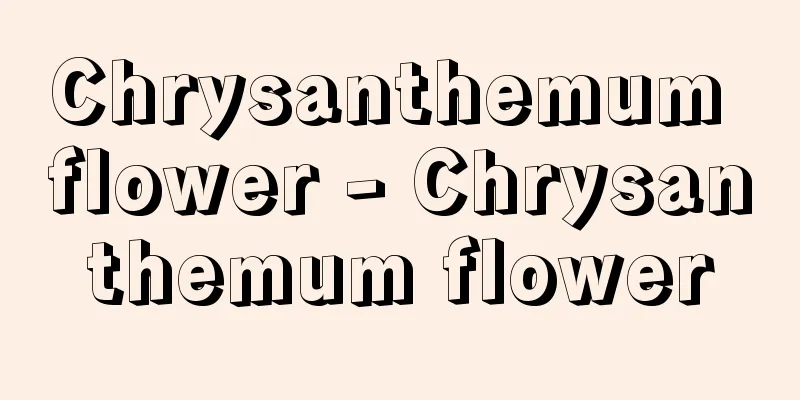Kitaryu

|
A school of Noh. One of the five schools of shite actors. It was a new style recognized by the shogunate around 1619 (Genwa 5) in the early Edo period, so it did not have its own supporting actors or musicians, and was called Yoza Ichiryu (four theaters and one school) to distinguish it from the four theaters (Kanze, Konparu, Hosho, and Kongo) that had existed since the Northern and Southern Courts. The founder of the school was Kita Shichitayu, who also held the title of Kongo Tayu. Following the example of Tokugawa Hidetada and Iemitsu's preference for the Shichitayu, many feudal domains also used the Kita school, and by the end of the Edo period, there were as many as 29 domains. The third head of the Kita school, Kita Muneyoshi, was the instructor for Shogun Tsunayoshi, who was addicted to Noh. The 9th head of the Kita Kono school, Kita Nosei, wrote many books, including "Jufukusho." The 12th head of the Kita school, Kita Nosei, boasted of his influence under the patronage of Tokugawa Iemochi, and heads of large feudal domains such as Ii Naosuke, Yamauchi Yodo, and Todo Takayoshi studied the Kita school, but after the Meiji Restoration, the school fell into seclusion. After Nosei's adopted son Katsuyoshi was divorced, Nosei's grandson Kita Roppeita succeeded him as the 14th head of the school at the age of 7 in 1881 (Meiji 14), and revived the school with unwavering effort and unparalleled skill. The 15th head of the Kita school, Kita Minoru, was adopted by Roppeita, and his children were Kita Nagayo and Sadayo, and his brother was Goto Tokuzo, a Living National Treasure. The school has many talented members, such as the Tomoeda family from Kumamoto, which has long been the home of the Kita school, and the Awaya family from Hiroshima. The Kita school is based at the Kita Roppeita Memorial Noh Theatre in Meguro, Tokyo, and has its own journal, Kita. The school is very progressive, with many excellent young performers who are proactive in training the next generation, a campaign to popularize the school among students, a track record of new Noh performances by the duo Toki Zenmaro and Kita Minoru, and the first trip to Europe in 1954 (Showa 29). Even today, the school still retains strong traces of the samurai style of music, values spirit, and has a straightforward style of performance. Kita Nagayo is the 16th head of the Kita school. He took the name Rokubeita. [Masuda Shozo] "The Establishment and Development of the Kita School by Akira Omote (1994, Heibonsha)" [Reference item] |Source: Shogakukan Encyclopedia Nipponica About Encyclopedia Nipponica Information | Legend |
|
能の一流派。シテ方五流の一つ。江戸初期の1619年(元和5)ごろに幕府によって認められた新興の流儀なので、座としての専属のワキ方、囃子(はやし)方をもたず、南北朝以来の四座(観世、金春(こんぱる)、宝生(ほうしょう)、金剛)と区別して四座一流(よざいちりゅう)とよばれた。流祖は金剛の大夫(たゆう)も継いだことのある喜多七大夫(しちたゆう)。徳川秀忠(ひでただ)、家光(いえみつ)の七大夫びいきに倣って、各藩も多く喜多流を用い、幕末には29藩に及ぶほどであった。3世喜多宗能(むねよし)は能に耽溺(たんでき)した将軍綱吉(つなよし)の指南役であった。9世喜多古能(このう)は『寿福抄』ほか著書も多い。12世喜多能静(のうせい)は徳川家茂(いえもち)の後援でその勢力を誇り、井伊直弼(いいなおすけ)、山内容堂(ようどう)、藤堂(とうどう)高潔ら大藩の当主が喜多流を学んだが、明治維新後は逼塞(ひっそく)した。能静の養子勝吉が離縁のあと、能静の外孫喜多六平太(ろっぺいた)が1881年(明治14)7歳で14世を継ぎ、不抜の努力と比類ない名技によって流儀を再興した。 15世宗家喜多実(みのる)は六平太の養子で、その子に喜多長世(ながよ)、節世(さだよ)、その兄に人間国宝の後藤得三(とくぞう)がいる。古くから喜多流の地盤であった熊本出身の友枝(ともえだ)家、広島出身の粟谷(あわや)家など人材が多い。東京・目黒の喜多六平太記念能楽堂を拠点とし、機関誌『喜多』をもつ。後進の養成に積極的で優秀な若手が多く、学生層への普及運動や、土岐善麿(ときぜんまろ)と喜多実のコンビによる新作能活動の実績、1954年(昭和29)の初の渡欧能など、進取の気に富む流儀。いまも武家式楽風のおもかげが色濃く、気迫を重んじ、直線的な芸風である。16世宗家は喜多長世が継承。六平太を襲名。 [増田正造] 『表章著『喜多流の成立と展開』(1994・平凡社)』 [参照項目] |出典 小学館 日本大百科全書(ニッポニカ)日本大百科全書(ニッポニカ)について 情報 | 凡例 |
>>: Red squirrel (Northern squirrel)
Recommend
Euphorbol
…Because the stamens have joints, some consider e...
Old Testament - Vetus Testamentum; Old Testament
The Latin word testamentum means a covenant, a pro...
Sir John Richard Hicks
British theoretical economist. Born in Leamington...
Deformed dislocation - deformed dislocation
...Therefore, the way in which a baby's diape...
Ryūryō
The first nationalist thinker in the late Ming an...
water purification
…Clean water, water that is safe to drink, has lo...
Company name - Shago
A title that indicates the status of a shrine. The...
Azumi clan
A clan of gods who claim to be descendants of the...
Nosuke - Nosuke (English spelling) Gustav Noske
German Social Democratic politician. Born the son...
ectoparasite
…Parasites include unicellular protozoa (protozoa...
Medina - Medina (English spelling)
A religious city in northwestern Saudi Arabia. It...
Princess Usatsu - Princess Usatsu
...The Engishiki Shinmeicho lists Hachiman Daibos...
Dodecatheon patulum (English spelling) Dodecatheonpatulum
… [Munemin Yanagi]. … *Some of the terminology th...
Topsell, E. (English spelling) TopsellE
…But on the other hand, they were also believed t...
Cooper, KH
...Both are technical terms in exercise physiolog...









